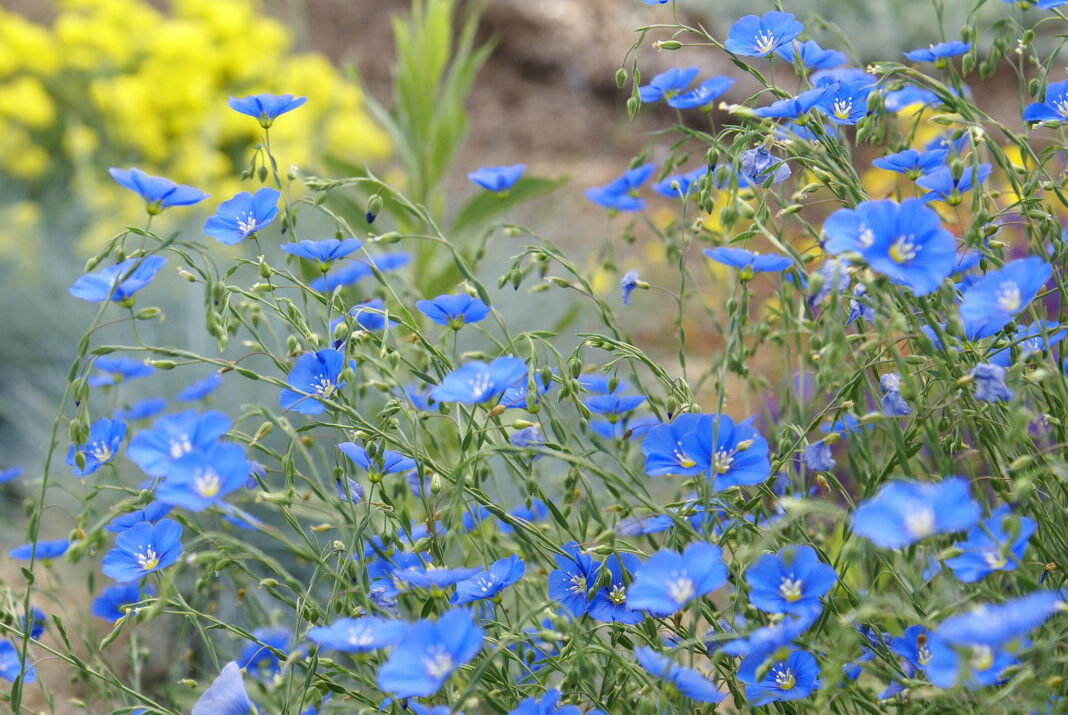Gardening 101: Blue Flax
Introduction
Blue Flax, scientifically known as Linum lewisii, is a beautiful perennial plant that is native to North America. This plant is beloved by gardeners for its delicate blue flowers that bloom in the spring and summer, adding a pop of color to any garden. Blue Flax is relatively easy to grow and maintain, making it a popular choice for both beginner and experienced gardeners.
Planting Blue Flax
Blue Flax thrives in well-drained soil and full sun, making it ideal for gardens with plenty of sunlight. To plant Blue Flax, choose a location with good drainage and prepare the soil by mixing in some compost or organic matter. Sow the seeds directly into the soil in the spring or fall, spacing them about 12 inches apart. Water the seeds well after planting, and keep the soil moist until the seeds germinate.
Care and Maintenance
Blue Flax is a relatively low-maintenance plant, making it a great option for busy gardeners. Water the plant regularly, especially during hot and dry periods, to ensure that the soil stays moist but not waterlogged. Deadhead the flowers to encourage more blooms and remove any spent blooms to keep the plant looking tidy. Blue Flax does not require fertilization, but you can add a slow-release fertilizer in the spring if needed.
Pruning and Dividing
Blue Flax does not require much pruning, but you can trim back the plant after it has finished flowering to promote new growth. If the plant becomes overgrown or overcrowded, you can divide it in the spring or fall by digging up the plant and separating the root ball into smaller sections. Replant the sections in well-prepared soil and water them well to help them establish themselves.
Common Pests and Diseases
Blue Flax is relatively resistant to pests and diseases, making it a hassle-free plant to grow. However, aphids and spider mites can occasionally be a problem, especially in hot and dry weather. To prevent these pests, keep the plant well-watered and monitor it regularly for any signs of infestation. You can also use insecticidal soap or neem oil to treat any pest problems that arise.
Conclusion
Blue Flax is a beautiful and easy-to-grow plant that is perfect for adding color and texture to any garden. With proper care and maintenance, you can enjoy the delicate blue flowers of Blue Flax year after year. Whether you are a beginner gardener or an experienced green thumb, Blue Flax is a great addition to any garden.
FAQs
1. When is the best time to plant Blue Flax?
The best time to plant Blue Flax is in the spring or fall when the soil is cool and moist. This will give the seeds the best chance of germinating and establishing themselves in the garden.
2. How often should I water Blue Flax?
Blue Flax should be watered regularly, especially during hot and dry periods. Water the plant deeply, allowing the soil to dry out slightly between waterings to prevent overwatering.
3. How tall does Blue Flax grow?
Blue Flax typically grows to a height of 1 to 2 feet, depending on the variety. The plant produces slender stems with delicate blue flowers that add a pop of color to the garden.




